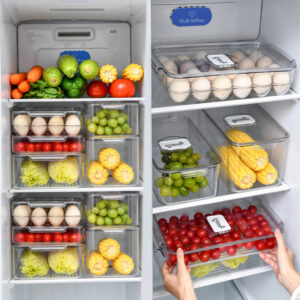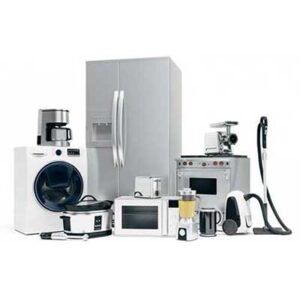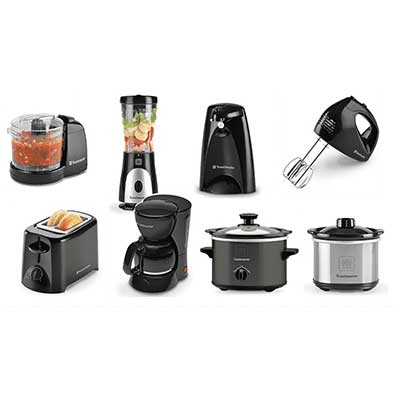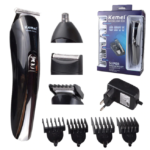No products in the cart.
How Should All Food Be Storied in the Refrigerator? Leave a comment
Introduction
Every home needs a refrigerator since it keeps our food fresh and hygienic for consumption. Though not all items should be kept at the same temperature or in the same manner. It’s crucial to know how to store various foods in the refrigerator in order to maintain maximum freshness and avoid food spoiling. This article will examine major food types and provide professional advice on how to preserve them effectively.
Veggies and Fruits
Storage of Fruits
Fruits should be stored with their ethylene production and level of maturity in mind. Certain fruits emit ethylene as they mature, a natural gas that may hasten the ripening of neighbouring fruits. These recommendations can help you avoid early spoilage:
Fruits should be kept apart: To prevent fast ripening, keep fruits that release large quantities of ethylene, including apples and bananas, apart from other fruits.
Keep delicate fruits chilled: To preserve their freshness and lengthen their shelf life, berries, cherries, and grapes are best kept in the refrigerator.
Stone Fruits Should be Left at Room Temperature:
Storage of Veggies and Fruits
 Fruits should be stored with their ethylene production and level of maturity in mind. Certain fruits emit ethylene as they mature, a natural gas that may hasten the ripening of neighbouring fruits. These recommendations can help you avoid early spoilage:
Fruits should be stored with their ethylene production and level of maturity in mind. Certain fruits emit ethylene as they mature, a natural gas that may hasten the ripening of neighbouring fruits. These recommendations can help you avoid early spoilage:
Fruits should be kept apart: To prevent fast ripening, keep fruits that release large quantities of ethylene, including apples and bananas, apart from other fruits.
Keep delicate fruits chilled: To preserve their freshness and lengthen their shelf life, berries, cherries, and grapes are best kept in the refrigerator.
Stone fruits should be left at room temperature: Until they have the ideal level of maturity, fruits including peaches, plums, and avocados should be kept at room temperature. Once they are ready, you may put them in the fridge to prevent further ripening.
Keep Vegetables Safe
Compared to fruits, vegetables need different storage conditions. Stick to these rules to keep your veggies crisp and fresh:
Eliminate extra moisture: Vegetables should be dry before storage to minimise bacterial development and deterioration. To get rid of extra moisture, pat them dry or spin them in a salad spinner.
Leafy greens should be kept correctly in the crisper drawer of the refrigerator in a breathable container or a perforated plastic bag. Examples of these greens are lettuce, spinach, and kale. This keeps them from withering and preserves their freshness.
Separate your root vegetables: Carrots, potatoes, and onions should all be kept in their own containers and kept in a cold, dark spot, such as a pantry or a root cellar. Maintain a distance between them and fruits since certain fruits emit ethylene, which may result in sprouting or spoiled food.
Dairy Goods
A popular staple in many refrigerators is dairy food. To preserve their quality and stop the spread of dangerous microorganisms, proper storage is essential.
Milk
Milk must always be kept fridge since it is very perishable. Follow these recommendations for milk storage:
Take a temperature reading: Set the temperature of your refrigerator between 34°F (1°C) and 40°F (4°C) to keep the milk fresh and suitable for consumption.
Keep in original packaging: Keep milk in its original carton or bottle since such containers are intended to shield it from odours and light. Glass containers should not be used to transport milk since they expose the liquid to light.
A shelf should be used, not the door: The refrigerator door’s temperature changes as a result of repeated opening and shutting. Milk should be kept on a shelf close to the rear of the refrigerator to maintain a constant temperature.
Cheese
Cheese is a flexible food that has many different varieties and textures. Its flavour can be preserved and mould development may be stopped with proper storage:
Wrap cheese properly: To keep it from drying out after opening, securely rewrap cheese in wax paper or plastic wrap. You might also keep it in a resealable plastic bag.
Store in a special cheese drawer: Some refrigerators feature a special cheese drawer with a humidity setting that can be adjusted. Use the cheese compartment if one exists in your refrigerator. If not, keep cheese on the lowest, often coldest shelf in the refrigerator.
Avoid wrapping in plastic cling film since it may retain moisture and encourage the formation of mould. Instead, use breathable fabrics like cheese or wax paper.
Chicken and Meat
To avoid foodborne infections, meat and poultry must be stored properly. To maintain their security, abide by following recommendations:
To avoid foodborne infections, meat and poultry must be stored properly. To maintain their security, abide by following recommendations:
Fresh Meat
 As soon as you get raw meat home from the supermarket, immediately put it in the top mount refrigerator to maintain a safe temperature. It should be kept on the bottom shelf of the refrigerator, which is the coolest spot.
As soon as you get raw meat home from the supermarket, immediately put it in the top mount refrigerator to maintain a safe temperature. It should be kept on the bottom shelf of the refrigerator, which is the coolest spot.
Store in containers with tight lids: To avoid cross-contamination with other items, put raw meat in leak-proof containers or bag it firmly.
obey the use-by dates To guarantee that the meat is fresh, pay attention to the use-by dates on the container and eat or freeze the meat before those dates.
The prepared meat shop delivered quickly: To stop bacterial development, place cooked beef leftovers in the refrigerator no later than two hours after cooking.
Slice cooked meat into smaller chunks before storing it in the refrigerator if you have a big piece. This makes it possible to cool more quickly and distribute heat evenly.
Use airtight containers: To stop cooked meat from drying out and absorbing flavours from other foods in the refrigerator, place it in airtight containers or securely wrap it in aluminium foil or plastic wrap.
Seafood
It is essential to store seafood properly to preserve its freshness and stop the formation of dangerous germs. Keep in mind these recommendations while keeping various seafood varieties:
Fish
Fish should be stored at a temperature between 32°F (0°C) to 38°F (3°C) since it is very perishable. To assure the right temperature, use a refrigerator thermometer.
Fish should be wrapped properly: To avoid odour transfer and keep its moisture, wrap fish firmly in plastic wrap or store it in airtight containers.
Fish should be stored on ice to keep them cool and fresh. If you’re keeping entire fish or fillets, lay them on a bed of ice in a shallow pan or tray.
Shellfish
Dead shellfish should be thrown away. Check to see whether clams, mussels and oysters are still alive before keeping them. If a shellfish does not shut when tapped, throw it away since it can be dead and hazardous to eat.
Shellfish should be kept in a ventilated container. Put live shellfish in a container that can breathe, such as a mesh bag or a dish that is covered with a wet cloth. As a result, they are able to breathe and don’t suffocate.
Leftovers Leftovers may make a tasty and practical choice for fast dinners. Foodborne infections, however, might result from poor storage. Observe these recommendations for keeping leftovers:
After a meal, cool leftovers fast by putting them in the single door refrigerator within two hours to stop germs from growing. To enable faster chilling, divide big amounts into smaller containers.
Label and date the containers: To maintain track of the freshness of leftovers, clearly label and date the containers. Within three to four days, consume them, or freeze them for extended preservation.
Reheat leftovers thoroughly by making sure they achieve an internal temperature of 165°F (74°C) in order to eradicate any potential germs.
Seasonings and Sauces
Sauces and condiments may give a variety of meals flavour. Their quality is preserved and spoiling is avoided with proper storage.
Mustard and Ketchup
Keeping in the fridge: To preserve flavour and quality, open bottles of ketchup and mustard should be kept in the fridge.
Look for mould or discoloration: Check your condiments often for any mould, discolouration, or strange odours.
Seasonings and Sauces
Sauces and condiments may give a variety of meals flavour. Their quality is preserved and spoiling is avoided with proper storage.
Mustard and Ketchup

Keeping in the fridge: To preserve flavour and quality, open bottles of ketchup and mustard should be kept in the fridge.
Look for mould or discoloration: Check your condiments often for any indications of discolouration, mould, or strange odours. If you find any, get rid of them right away.
Keep containers clean. To minimise the accumulation of residue and retain freshness, wipe the rims of condiment bottles before recapping them.
Mayonnaise
Refrigerate mayonnaise after opening: To inhibit bacterial development, mayonnaise should always be refrigerated after opening. For any special storage directions, check the label.
Avoid cross-contamination: When squeezing mayonnaise from the container, use clean tools to avoid introducing germs. When using spoons that have touched other meals, refrain from double dipping.
Beverages
Beverages must be stored properly to preserve their flavour and quality. Here are some pointers for storing typical beverage types:
Juices
Refrigerate juice after opening: To keep it fresh, place an opened bottle of juice in the bottom mount fridge. For detailed refrigerator directions, see the package.
Consume within the suggested window of time: On juice bottles, pay attention to the “best by” or “use by” dates. To ensure the juice’s best flavour and quality, drink it within that time limit.
Avoid being exposed to light: Some juices might lose quality when exposed to light. To reduce exposure to light, store them in dark containers or in the refrigerator.
Drinks with Carbonation and Sodas
Store in a dry, cold environment: Soda and other carbonated beverages should be stored in unopened cans or bottles in a cool, dry place away from heat sources and the sun.
Refrigerate the remainder of a can or bottle after opening it to maintain the carbonation and stop the beverage from falling flat.
Use airtight containers: To keep soda or other carbonated beverages from becoming flat, ensure sure the new container is airtight before transferring them.
FAQs
How long should I keep leftovers in the fridge?
For three to four days, leftovers may be kept in the refrigerator without risk. It’s essential to reheat them to a temperature of 165°F (74°C) before serving and to keep them in sealed containers.
Can milk be frozen for later use?
Milk can indeed be frozen for use later. The milk should ideally be transferred to a freezer-safe container with enough space for expansion. Before using, shake frozen milk thoroughly to thaw it in the fridge.
Can I keep my produce in the same drawer as my fruits?
Even though they may both be kept in the same drawer, certain fruits release ethylene gas, which can hasten the ripening of vegetables. Fruits and vegetables should ideally be kept separate in drawers to preserve their freshness.
How should fresh herbs be kept in the refrigerator?
Trim the stems of fresh herbs like cilantro, parsley, and basil, put them in a glass of water, and cover them loosely with a plastic bag to keep them fresh for longer. To keep the water fresh, change it every few days.
Before putting cooked eggs in the fridge, should I take the shells off?
When keeping cooked eggs in storage, it is better to leave the shells on.
Before putting cooked eggs in the fridge, should I take the shells off?
When keeping cooked eggs in the fridge, it’s better to keep the shells on. The shells serve as a barrier to guard against contamination and moisture loss. To keep the eggs as fresh as possible, peel them just before eating.
Is it possible to keep bread in the fridge?
Bread may be kept in the refrigerator to increase its shelf life, but the low temperature causes it to dry up more quickly. It is advised to keep bread in a cold, dry location, such as a pantry or bread box. To reduce moisture loss while storing it in the fridge, think about using airtight bags or containers.
How can I prevent the smells from one meal in the refrigerator spreading to another?
Use airtight containers or wraps to prevent odours from spreading among various items in the refrigerator. Additionally, keeping the refrigerator odor-free and absorbing odours may be accomplished by putting an open box of baking soda inside.
Bananas may be kept in the refrigerator?
Bananas may be chilled to delay ripening even though they are normally maintained at ambient temperature to promote ripening. Remember that although the fruit within will stay fresh in the refrigerator, the peel may get darker. You may wait until the bananas are at room temperature if you want ripe bananas.
Can cooked beef be frozen for later use?
Unused cooked beef can be frozen, yes. When the beef is totally cooled, place it in sealed freezer bags or containers for storage. To guarantee adequate rotation, mark the packages with the date and kind of meat. The meat should be defrosted in the refrigerator when ready to use before being heated.
Conclusion
Food must be stored correctly in the refrigerator to retain freshness, avoid deterioration, and guarantee food safety. You may increase the shelf life of different kinds of food and lower your risk of contracting foodborne diseases by according to the storage instructions.
Keep in mind to separate fruits and vegetables, keep dairy items at the right temperature, handle raw meat and seafood with caution, and store condiments and leftovers carefully. You can make the most of your refrigerator and enjoy wonderful, fresh meals by putting these strategies into practise.
Make sure to frequently check your refrigerator for cleanliness, get rid of anything that is rotten or expired, and keep the temperature settings correct for the best food storage.
You can reduce waste, save money, and make the most of your refrigerator by taking the time to store every kind of food properly.
visit our social media facebook plugnpoint












